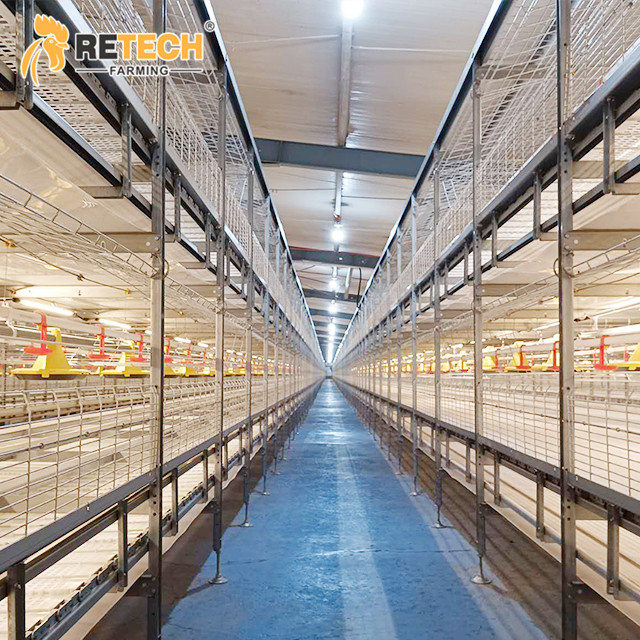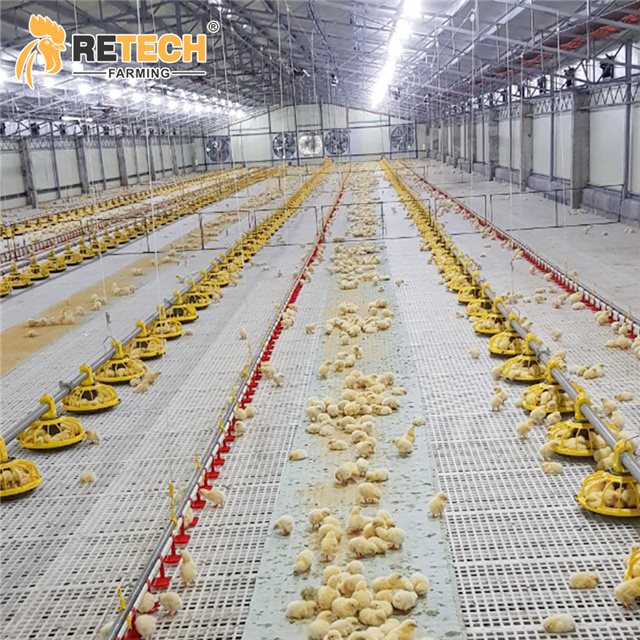First, we should select breeder chickens that are suitable for local conditions, have high production performance, strong disease resistance and can produce high-quality offspring according to local environmental conditions. Secondly, we should implement isolation and control on the introduced breeder chickens to prevent infected breeder chickens from entering the chicken farm and prevent the disease from spreading vertically through the breeder chickens.
Commercial quality broiler breeds: Cobb、Hubbard、Lohman、Anak 2000、Avian -34、Starbra、Sam rat etc.
Chicken House Environmental Control
Broilers are very sensitive to ambient temperature. If the temperature in the chicken house is too low, it is easy to cause problems such as poor yolk absorption, decreased feed intake, slow movement, and digestive tract diseases in broilers. Due to fear of cold, broilers will also huddle together, increasing the suffocation mortality rate of the flock. If the temperature is too high, it will affect the physiological and metabolic conditions of broilers, causing them to breathe with their mouths open and increase their water intake, while their feed intake will decrease, their growth rate will decrease, and some broilers may even die from heatstroke, affecting their survival rate.
The breeder should reasonably control the temperature in the chicken house to ensure the normal physiological activities of the chickens. Generally speaking, the younger the chicks are, the higher the temperature is. For details, please refer to the following:
When the chicks are 1 to 3 days old, the temperature in the chicken house should be controlled at 32 to 35 ℃;
When the chicks are 3 to 7 days old, the temperature in the chicken house should be controlled at 31 to 34 ℃;
After 2 weeks of age, the temperature in the chicken house should be controlled at 29 to 31 ℃;
After 3 weeks of age, the temperature in the chicken house can be controlled at 27 to 29 ℃;
After 4 weeks of age, the temperature in the chicken house can be controlled within the range of 25 to 27 ℃;
When the chicks are 5 weeks old, the temperature in the chicken house should be controlled at 18 to 21 ℃, and the temperature should be maintained in the chicken house in the future.
During the breeding process, appropriate temperature adjustments can be made according to the growth status of the broilers to avoid large temperature changes, which will affect the normal growth of the broilers and even cause diseases. In order to better control the temperature of the chicken house, the breeders can place a thermometer 20 cm away from the back of the broilers to facilitate adjustments based on the actual temperature.
The relative humidity in the chicken house will also affect the healthy growth of broilers. Too much humidity will increase the growth of bacteria and induce various related diseases of broilers; too little humidity in the chicken house will cause excessive dust in the house and easily cause respiratory diseases.
The relative humidity in the chicken house should be maintained in the range of 60%~70% during the chick stage, and the humidity in the chicken house can be controlled at 50%~60% during the rearing stage. Breeders can adjust the relative humidity of the chicken house by measures such as sprinkling water on the ground or spraying in the air.
Because broilers generally grow and develop quickly and consume a lot of oxygen, modern chicken farms usually switch from natural ventilation to mechanical ventilation. The chicken house is equipped with ventilation systems, fans, wet curtains and ventilation windows to maintain a comfortable breeding environment. When the chicken house is stuffy and smells ammonia, the ventilation volume, ventilation time and air quality should be increased. When the chicken house is too dusty, ventilation should be strengthened while increasing humidity. In addition, care should be taken to ensure that the temperature of the chicken house is appropriate and excessive ventilation should be avoided.
Modern broiler houses have lighting systems. Different colors of light have different effects on broilers. Blue light can calm the flock and prevent stress. Currently, broiler lighting management mostly uses 23-24 hours of lighting, which can be set by breeders according to the actual growth of broilers. Chicken houses use LED lights as light sources. The light intensity should be appropriate for chicks aged 1 to 7 days, and the light intensity can be appropriately reduced for broilers after 4 weeks of age.
Monitoring the flock is the most important task in broiler management technology. Poultry farmers can adjust the environment of the chicken house in time by observing the flock, reduce the stress response caused by environmental factors, and detect diseases in time and treat them as soon as possible.
Choose Retech Farming-a trusted poultry farming partner that provides turnkey solutions and start your poultry farming profit calculation. Contact me now!
Email:director@retechfarming.com
Post time: Dec-18-2024














